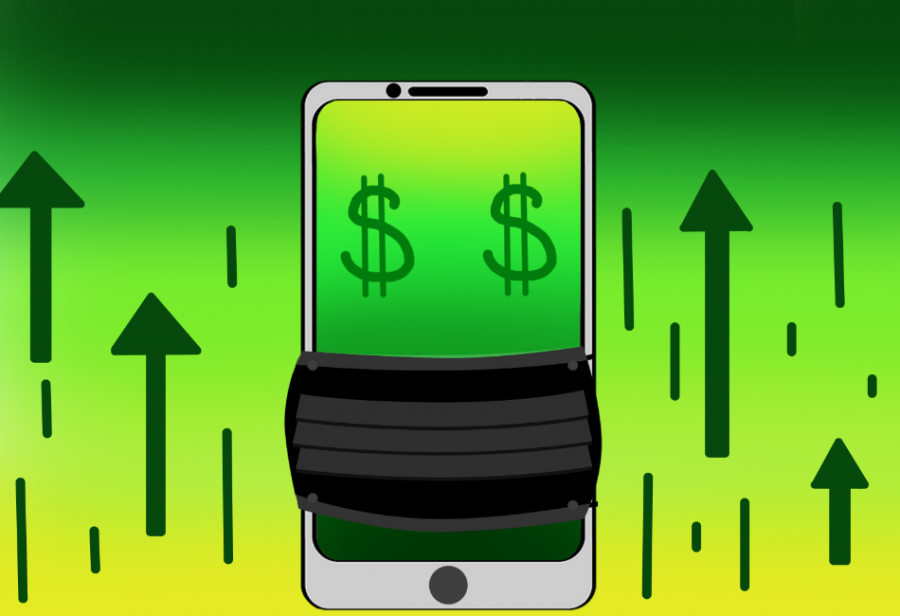OPINION: Touchless payment is the way of the future
The age of physical currency is almost over
Touchless and mobile payments minimize risk of viral transmission for the customer and the business.
July 1, 2020
More businesses need to use mobile payment systems. Mobile payment, or touchless payment as it is sometimes called, has become one of the most convenient methods of transaction. In an age where technology rules over everything, there is no reason why this hasn’t been (or shouldn’t be) widely implemented yet.
Mobile payment is the future. Many people worldwide use their phones to pay for things. It’s simple and convenient. When you need to pay your friend back, it’s a lot easier to send them money through Venmo than it is to waste time making change, plus it’s easy to set up. Using a credit card, you can set up a mobile payment system like Venmo or Apple Pay with no hassle.
Other countries, like China, have enjoyed a widespread standardization of mobile payments in almost every store or restaurant. When I traveled there in the fall of 2019, nearly every restaurant and store accepted mobile payment, and some didn’t accept cash at all. It made payments so much easier.
The pandemic makes this an especially interesting topic. The low risk of infection from touchless payments is all the more reason why we should all be using them. Because of COVID-19, some restaurants and stores have even stopped accepting cash altogether to help stop the virus’s spread.
Sarah VanVlerah, an employee of New Belgium Brewing Company in Fort Collins, Colorado, wrote in an email that the business now primarily uses mobile payment.
“With the abundance of caution we are taking to ensure our coworkers and the public are as safe as possible, while still enjoying [the brewery’s] vibe, we believe it’s best to avoid cash,” VanVlerah wrote.
VanVlerah said instead of cash, customers can download an app that lets them keep a tab with their phones.
Experts have also pointed to touchless payment as a low-risk form of payment. Guy Palmer, director of the Paul G. Allen School for Global Animal Health, wrote in an email that while there is less risk of infection from cash compared to other sources, mobile payment is still a positive action.
“While the individual risk from using cash may be very low, it is also something that can be avoided with little inconvenience to the customer,” Palmer wrote.
Implementing mobile payment is not difficult. Stores can set up a Venmo or Apple Pay account where customers can send the account money. This makes for easy and painless transactions. In addition, it makes the whole transaction easy for both the customer and the employer. Instead of worrying about change at the counter, you can complete the transaction in seconds with the tap of your finger.
Touchless payments can help employees, too.
“One of the biggest differences [between cash and touchless payment] is peace of mind for our coworkers,” VanVlerah wrote. “Handling cash is a risk we don’t want to take right now.”
As for the future, both sources said they thought touchless payment will continue to be used.
“Cash payments have been decreasing for some time already,” Palmer wrote. “My opinion would be that cashless payments will continue to be adopted and likely accelerated due to the current pandemic.”
VanVlerah wrote she thinks fewer people will carry cash but her business won’t necessarily stop allowing it for good.
“I don’t know that we will ‘never take cash again’ but this does push us to continuously find new ways to meet our guests’ needs and expectations,” VanVlerah wrote. “I do anticipate fewer guests carrying cash in the first place, which may lead to us taking less.”
The pandemic has changed so many parts of our lives, so this is a great time for businesses to consider using mobile and touchless payment systems. It is convenient for everyone and helps keep customers and employees safe, so let’s make the change now.









